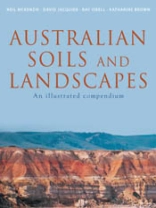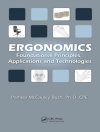This essential reference provides an introduction to the remarkable soils and landscapes of Australia. It reveals their great diversity and explains why an understanding of soil properties and landscape processes should guide our use of the land.
Using striking photographs of characteristic landscapes, it begins by describing the basic properties of soils and how Australia’s distinctive soils and landscapes have co-evolved. We gain a greater understanding of why particular soils occur at certain locations and how soil variation can influence landscape processes, agricultural productivity and ecosystem function. The book explains the impact of various forms of land use and the changes they can bring about in soil.
This is followed by an invaluable compendium that describes and illustrates over 100 of the more important and widespread soils of Australia, along with their associated landscapes. There is a brief account of each soil’s environment, usage and qualities as well as details on chemical and physical properties so we can make more informed decisions about appropriate land-use.
Australian Soils and Landscapes will be a valuable resource for farmers, natural resource managers, soil and environmental scientists, students and anyone with an interest in Australia’s unique environment.
Innehållsförteckning
Acknowledgements
Introduction
1 Properties of soil
2 The evolution of Australian soils
3 Characteristic Australian landscapes
4 Soil function within ecosystems
5 Land use, soil change and future management
Compendium of Australian Soils
Rationale and format
Anthroposols – soils formed by humans
Calcarosols – soils dominated by carbonate
Chromosols – neutral to alkaline soils with sharp increases in texture
Dermosols – structured B horizons and minor changes in texture
Ferrosols – high iron levels and minor changes in texture
Hydrosols – wet soils
Kandosols – strongly weathered earths with minor changes in texture
Kurosols – acid soils with sharp increases in texture
Organosols – organic soils
Podosols – soils with accumulations of organic matter, iron, and aluminium
Rudosols – minimally developed soils
Sodosols – alkaline and sodic soils with sharp increases in texture
Tenosols – slightly developed soils
Vertosols – cracking clays
Endnotes
References
Index












